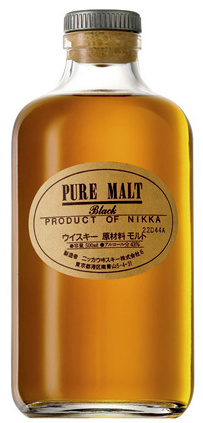Every time someone in the world dares to open a bottle like this, an earthquake occurs amongst collectors. Up ’till now lots of old bottles of Scottish Whiskies, particularly from closed or classic Speyside or Islay distilleries, fetched the highest prices. Today it may very well be Karuizawa, a Japanese Whisky, which is delicious and becoming extremely rare. These bottles are bottled, and hardly anyone opens them anymore. Well not Master Quill! I’m very happy to open my less than-half sample of this Karuizawa and share my thoughts with the world!
 Color: Vibrant full gold.
Color: Vibrant full gold.
Nose: Wow, this emits heaps of aroma. Nice rubbery notes and extremely waxy. Fresh and vibrant and highly aromatic. It oozes a typical Japanese nutty kind of smell and cask toast. Fragrant green tea combined with the more obvious creamy vanilla note we know from casks made of American oak that once held Bourbon (or Tennessee Whiskey). There is some kind of sweet sensation underneath that reminds me a bit of hot sugar-water. The wood emits fresh oak and fresh tree sap, with whiffs of powdered coffee creamer. Quite floral and fruity. The fruity part are hints of fresh (thus not over-ripe) plums. The floral part is more about fruit trees in bloom rather than any kind of flowers. Elegant stuff.
Taste: Quite hot with ashes and an old oaky bitterness. Pencil shavings and some sort of hidden fruitiness. Lovely dusty nuttiness comes to the forefront too, making this a woody Whisky. Dark bitter chocolate and (ear) wax. If you can get past all the furniture and dark chocolate, there is some candied fruit behind all that.
Never owning a bottle myself I had some kind of luck having tried this one several times. Once from a freshly opened bottle, but also the last few drops from a bottle that had some time to let the Whisky breathe. I have to say that this particular Karuizawa is stellar when freshly opened, but with that the oxidation starts. Usually oxidation is not a bad this in Whisky, but sometimes oxidation changes or even ruins the Whisky. Here we have an example where oxidation really can change the Whisky. When this Karuizawa oxidizes the focus shifts more towards the (especially in the taste), whereas the freshly opened bottle is way more fruity. I don’t have a freshly opened bottle at hand, so this review is written tasting the last drops of the bottle, but I do remember the Whisky well when it was freshly opened. The score is for the freshly opened bottle. The last drops would score around 87 points so beware!
Points: 95
 Color: Full gold.
Color: Full gold. Color: Light orange gold
Color: Light orange gold Color: Gold, with a tinge of ocher (dandruff)
Color: Gold, with a tinge of ocher (dandruff) Color: Light gold.
Color: Light gold. Wow, how quickly a week passes by. Already the last day of the Japanese Whisky Week. The last entry will be another Vintage Malt Yamazaki. This time a 1985. Will this be the best? But before I start reviewing this one, first a little comment.
Wow, how quickly a week passes by. Already the last day of the Japanese Whisky Week. The last entry will be another Vintage Malt Yamazaki. This time a 1985. Will this be the best? But before I start reviewing this one, first a little comment. Color: Dark mahogany
Color: Dark mahogany Color: Copper
Color: Copper Color: Gold
Color: Gold Taste: Very dry and oaky. Toast and a hint of soap. The soap returns in the texture that otherwise is pretty thin. Sherried. Seems old. Red & black fruits, mocha and coffee. Dry teeth. Unfortunately this has a short slightly burnt, oaky finish. In this case it’s probably a good thing it got reduced, because if this would have been 55% ABV or even higher, with all these thick aroma’s and all that oak, it probably would have been very hard to drink. It’s a syrup (just not in the texture).
Taste: Very dry and oaky. Toast and a hint of soap. The soap returns in the texture that otherwise is pretty thin. Sherried. Seems old. Red & black fruits, mocha and coffee. Dry teeth. Unfortunately this has a short slightly burnt, oaky finish. In this case it’s probably a good thing it got reduced, because if this would have been 55% ABV or even higher, with all these thick aroma’s and all that oak, it probably would have been very hard to drink. It’s a syrup (just not in the texture). Color: Orange gold.
Color: Orange gold.